You’re probably familiar with the saying that diamonds are a girl’s best friend. The value of diamonds extends far beyond their monetary worth. They are often given to loved ones on special occasions, carrying significant meaning and symbolism.
When we think of diamonds, we usually envision naturally mined ones. However, there’s an alternative that many people may not be aware of: lab-grown diamonds.
If you’re familiar with lab diamonds, own them, or are considering purchasing them, you might wonder about their long-term value. The question of whether lab diamonds will hold their value is not a straightforward one. Various factors come into play, but don’t worry – we’re here to provide you with insights.
If you’re curious about the future value of lab diamonds, keep reading for more information.
DESIGN YOUR OWN ENGAGEMENT RING: START WITH A SETTING OR START WITH A DIAMOND. IT’S REALLY UP TO YOU!
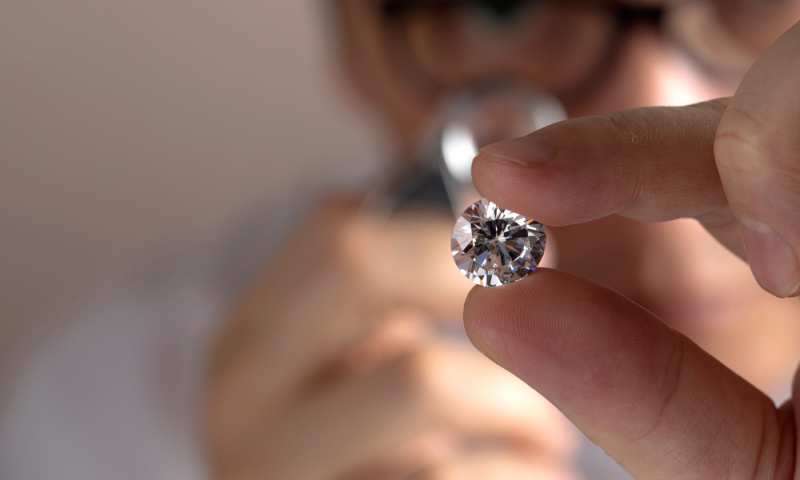
Natural Diamonds Vs. Lab Diamonds
While the distinction between natural and lab-grown diamonds is evident from their names, there are other differences that may not be as apparent. However, these differences play a significant role in their treatment today. Here’s a brief overview of both types:
Natural Diamonds
Natural or mined diamonds are formed deep within the Earth’s crust under conditions that cause carbon atoms to crystallize and create diamonds. They are then mined and used for various purposes, notably in jewelry.
Obtaining natural diamonds is a complex process that requires significant resources, energy, and time, making it highly unsustainable. These diamonds take an extensive period, usually between 1 and 3.3 billion years, to form. As a result, the price of the final product, whether it’s jewelry or something else, tends to be high, limiting accessibility to a broader consumer base.
These factors have prompted experts to explore alternative methods of diamond creation, leading us to the next point.
Lab Diamonds
As the name suggests, lab-grown or synthetic diamonds are created in laboratories and are artificially made. They are composed of carbon atoms arranged in the structure of diamond crystals through man-made processes. Lab diamonds were first developed in the mid-1950s and have been gaining popularity ever since.
The appeal of lab diamonds lies in their affordability and indistinguishable appearance from natural diamonds. However, it’s important to note that the production process for lab diamonds, although different from mining, still requires a significant amount of energy.
Due to these factors and others, the value of lab diamonds has been a subject of scrutiny. Specifically, people are beginning to question how the value of lab diamonds will hold up in the future.
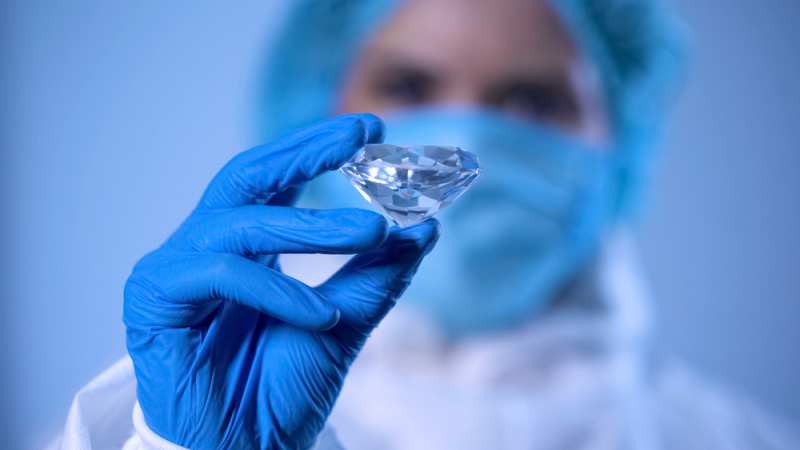
How Are Lab Diamonds Produced?
To understand the value of lab diamonds, it’s important to grasp the basics of their production process.
Lab-grown diamonds have often been touted as the “eco-friendly” or “green” alternative. However, such terminology is considered unclear and is not favored by the FTC due to the difficulty, if not impossibility, of substantiating these claims.
As mentioned earlier, the production process of lab diamonds is not highly sustainable, primarily due to the significant amount of energy required to create a single diamond.
The process used to produce lab diamonds is known as nucleation. It involves using a smaller diamond component, called a diamondoid, to stimulate the growth of a larger diamond.
Scientists at SLAC create synthetic diamonds through a method called chemical vapor deposition. In this process, crushed diamonds are sprinkled onto a silicon wafer, which is then heated using plasma.
Plasma can be thought of as an extremely hot gas where atoms no longer exist but instead form a mixture of ions and electrons. This hydrogen and carbon plasma can either dissolve diamondoids or facilitate their growth, resulting in the formation of larger diamonds.
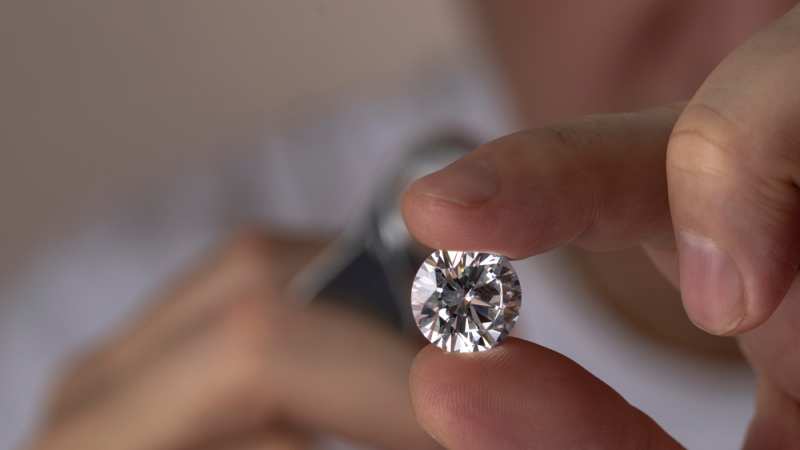
The Use Of Lab Diamonds
When we mention the word “diamond,” you probably envision sparkling jewelry and precious gems in a high-end jewelry store, or perhaps adorning your neck.
However, diamonds have more to offer beyond their beauty. Their exceptional durability makes lab diamonds valuable in various fields, including medicine and technology.
Lab diamonds are easier to produce and more cost-effective, yet they possess the same chemical structure as mined diamonds. This quality makes them highly versatile.
In the realm of orthopedics, lab diamonds show great potential for use in producing orthopedic devices. Their low friction, biological inertness, and durability make them ideal for such applications. In fact, ongoing clinical trials are exploring the use of lab-grown diamonds in spinal disk replacement—a truly remarkable advancement.
Moreover, lab diamonds play a crucial role in the creation of electronic devices that have become integral to our daily lives. Cellphone screens, among other components, utilize these synthetic gems. Furthermore, lab diamonds have the potential to replace silicon entirely in the tech industry as they serve as superior semiconductors.
Consider the multitude of devices you encounter on a daily basis, many of which rely on silicon. In the future, lab diamonds could replace silicon in all these devices—a remarkable prospect.
Notably, the use of lab diamonds in manufacturing devices has the potential to reduce our carbon footprint by at least 10% in the coming decades. This environmental advantage aligns perfectly with the growing ecological movements, further enhancing the appeal of lab diamonds.

What Determines The Value Of Diamonds?
Lab diamonds were developed with the purpose of offering a sustainable and more affordable alternative to mined diamonds. While their value may not match that of natural diamonds, it’s precisely this distinction that makes them appealing.
The introduction of synthetic diamonds has made diamond jewelry accessible to a broader range of people. However, when considering the value of diamonds, many individuals focus on their resale value—how much they can fetch when sold.
Here’s the thing: Both natural and lab diamonds experience a significant drop in resale value once purchased. Diamond retailers often neglect to mention that, once you leave the store, your diamond’s resale value can plummet to as low as 30% of its initial price. Yes, you read that correctly—only 30%!
The high cost of natural diamonds is attributed to their rarity, the complex mining and manufacturing processes involved, and their unparalleled durability. Furthermore, diamonds have applications beyond jewelry due to their exceptional hardness, making them suitable for various practical uses.
In economic terms, an item’s current market value is determined by its demand and supply. Natural diamonds are limited in quantity due to their formation process and subsequent factors. However, demand for diamonds has remained relatively high, leading to their elevated price point.
Nevertheless, in recent years, the natural diamond market has experienced a significant decline of approximately 10 to 20%. This is where lab diamonds enter the picture.
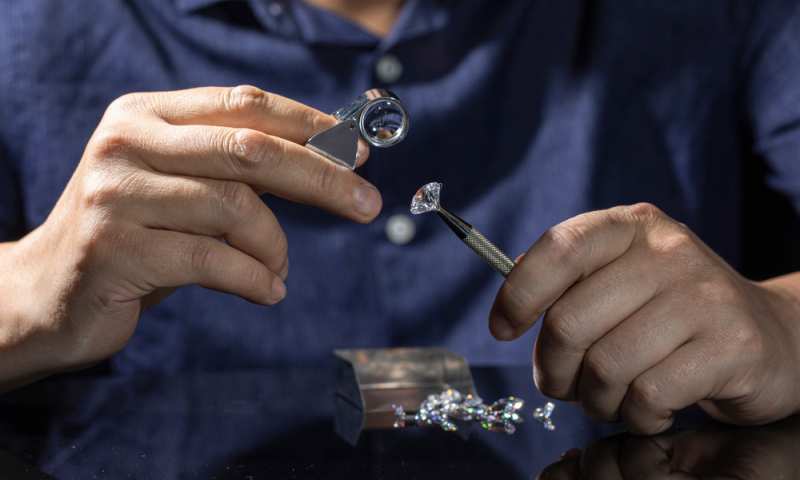
Will Lab Diamonds Hold Their Value In The Future?
Determining the future value of lab diamonds is a complex matter, and experts have differing opinions on the subject. Natural diamonds, with their uniqueness and historical significance, are likely to maintain their importance and demand in the jewelry industry.
This places lab diamonds in a somewhat dependent position, as their value will always be compared to that of mined diamonds. However, the versatility of lab diamonds in various industries is expanding, increasing their demand. The cost-effectiveness of lab diamonds makes them an attractive choice for the production of electronic and medical devices, giving them an advantage beyond jewelry.
Considering the bigger picture, lab diamonds have a broader range of applications compared to the dominance of mined diamonds in the jewelry sector. Additionally, an increasing number of people are open to purchasing synthetic diamond jewelry, regardless of its origin.
Taking these factors into account, there are compelling reasons to believe in a promising future for lab diamonds. While some may argue that natural diamonds are timeless and irreplaceable, it’s crucial to remember that the resale value of diamonds significantly decreases once they are purchased. Instead of viewing diamonds as a “safe investment,” it is more meaningful to purchase them for their intended purpose and personal significance.
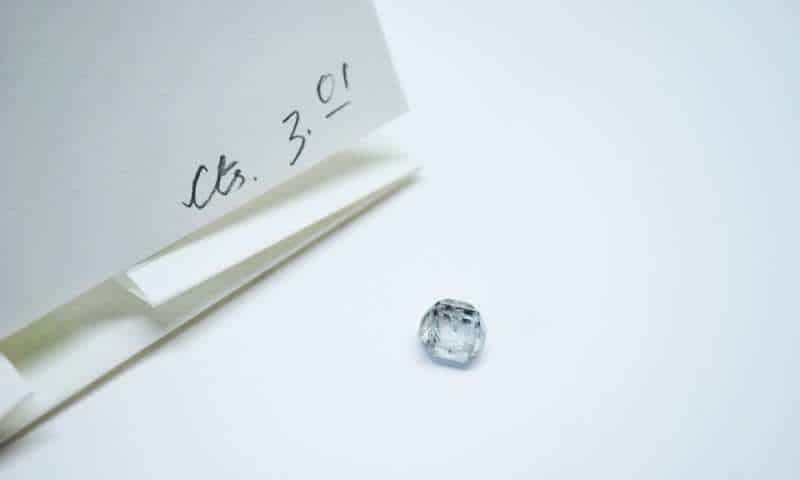
Conclusion
In search of secure investments, certain items hold inherent value, providing a reliable source of profit. Diamonds, being timeless gems with enduring popularity, often fall into this category. However, it’s important to differentiate between natural (mined) diamonds and lab (synthetic) diamonds when considering their value.
The question of whether lab diamonds will hold their value has been addressed in this article, and here’s a summary of the key points covered:
Natural diamonds are carbon crystals formed deep beneath the Earth’s surface over billions of years, while lab diamonds are synthetic versions created in a laboratory.
The process of creating lab diamonds involves nucleation, where a larger diamond grows from a smaller diamondoid particle.
Lab diamonds find applications in various fields, including jewelry making, technology, and medicine. They are even used in the production of electronic devices.
These factors contribute to the value of lab diamonds. However, when considering the overall significance of diamonds, there are several factors at play.
Supply and demand, the rarity of natural diamonds, and the complex mining and production processes all contribute to the high prices of mined diamonds.
In contrast, lab diamonds are more affordable to produce and more readily available, making them a popular choice in many cases.
Jewelry remains a domain where natural diamonds still dominate, although there is a growing trend of people willing to purchase synthetic diamonds at lower prices.
An important piece of information to consider is that once purchased, diamonds—regardless of their origin—typically lose about 70% of their initial value.
Therefore, diamonds are not ideal investments for those solely looking for resale value.
While experts may not agree on the future value of lab diamonds, their expanding range of applications suggests they are here to stay.
However, if you seek a secure investment with potential profitability, diamonds—both lab-grown and natural—may not be the best choice.
Ultimately, make wise decisions and enjoy your chosen path, whatever it may be.


